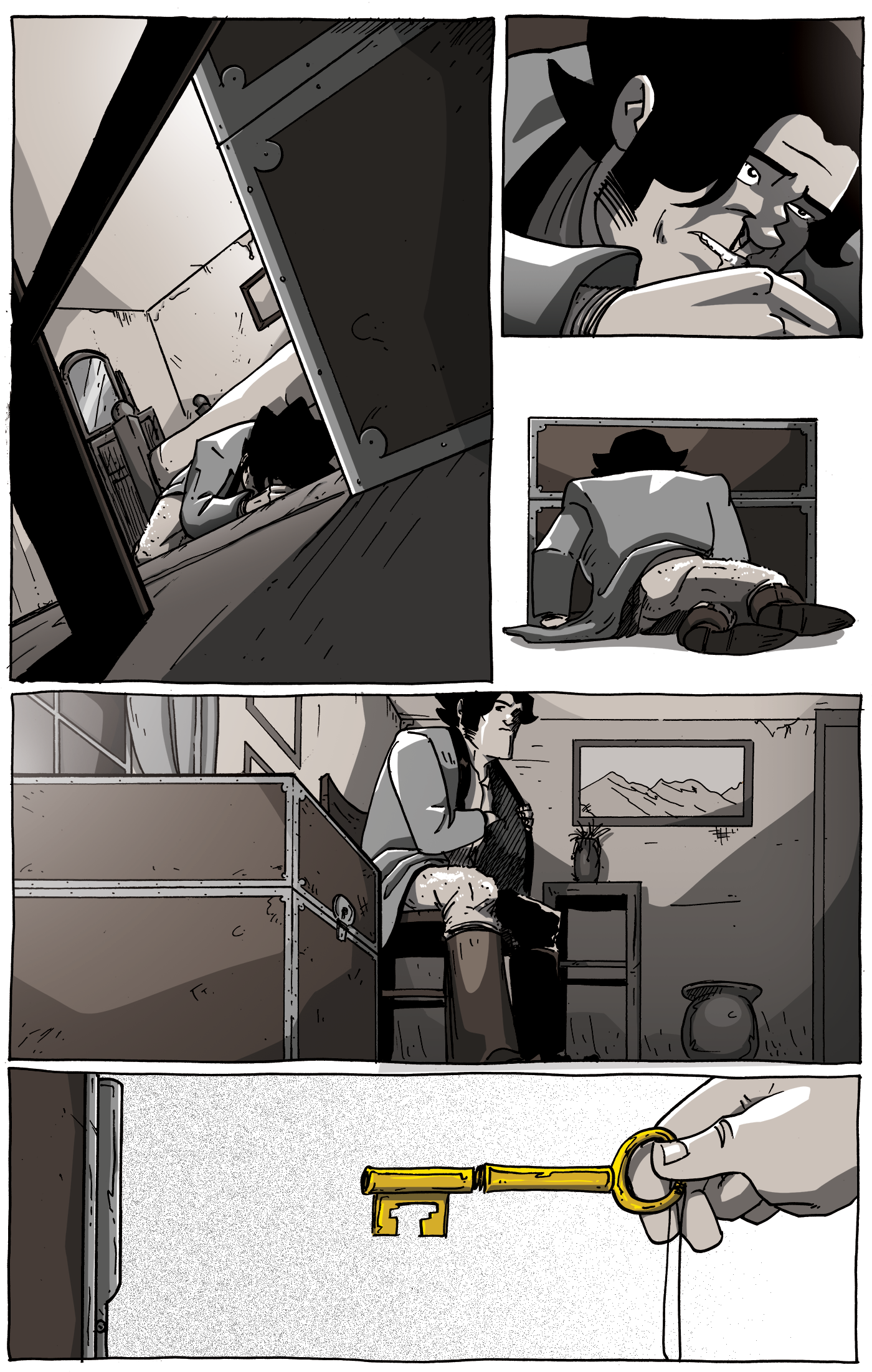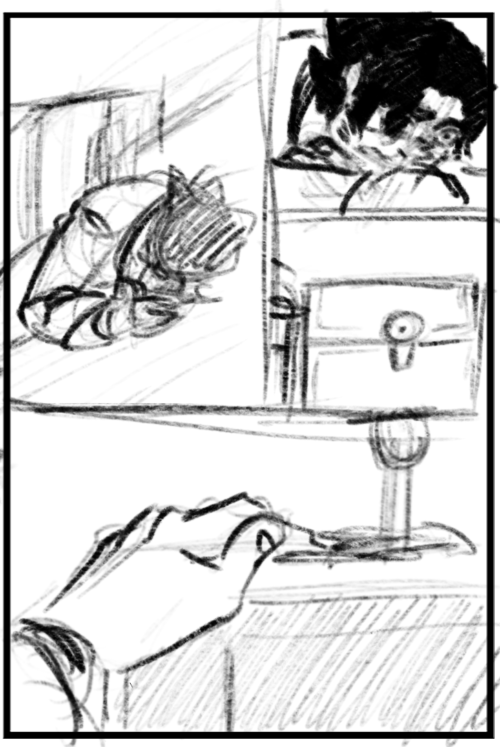As Promised
Wordless scenes have kind of become a motif of Long John, a part of the comic’s language set that gets used more often than even I realize.
Of course, it basically started with the opening scene of Chapter 1, but has been used sparingly throughout the rest of the story. As with the discussion of montages earlier in the chapter, wordless pages can have an interesting rhetorical and narrative effect on the reader: it slows them down.
A friend and colleague of mine is teaching a graphic novels as literature class and made a really interesting point that was nice to hear. Among her assignments, she dedicated one to the analysis of the art and artistic narrative over (or in addition to) the words on the page. The words of a comic should never be ignored, but a common piece of advice given to budding comic artists is that their pages should be able to convey the story being told without the words. Dialogue and captions surely add nuance and character and details to a comic, but the text is only a single cog of a comic, not any more or less important than any other.
Mainstream comics have become a writer-focused industry, mostly because they saved it from the hedonistic excess of the nineties and the crash of the late nineties and early 2000s. But even they often admit that comics are driving by art––that’s why we tend to like reading comics; they LOOK cool and fun.
However, reading comics tends to be a quick task as most of us––myself included––often read focusing mostly on the text and glancing at the art. Like montages, wordless scenes (which can also be montages) force a reader to slow down and used a different language set than either they normally do in general or, at the very least, what they normally use when reading a comic.
So too do wordless scenes allow creators to practice and flex storytelling muscles that can atrophy a bit when you’re normally drawing with dialogue placement in mind for a page. Without that taking up space, it allows for more experimentation and, to an extent, variety for page composition and shot composition. However, I wouldn’t say this is as drastic as it is for readers approaching a wordless page. In fact, for artists, these pages and scenes take us back to when we first started––drawing a page, trying to tell a story just with the lines I draw and nothing else.




Discussion ¬